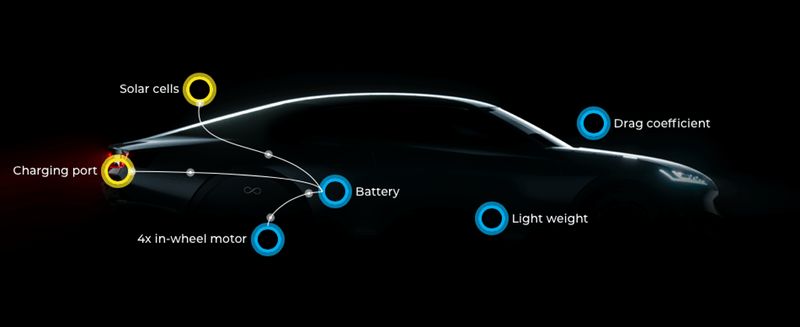World's 1st Long Range E-Solar Car Is Here!!
Jun 25, 2019 • 32 views
The modern day is buzzing about future electric cars, better for the environment than fossil fuel-burning vehicles and much safer. But these electric cars still rely on those heavy loaded grids. Which can be really dirty and harm the environment or clean depending on what sources it’s generated.
The new Lightyear One brought the solution of it, they have launched its prototype vehicle that would consume electric energy that by collecting the power from the sun.
Lightyear, was a startup from the Netherlands, now a well-established company. Its solar energy powered vehicle has brought storm in the automobile market and now looks ready for the road.
The Lightyear One has a driver-friendly design and also delivers an amazing range of 450 miles on a single charge, definitely from the sun. it is the 1st car to ever powered by solar and intended for the actual consumer market.

The startup says that it has already sold “over a hundred vehicles” the car isn’t yet ready to hit the road yet, soon when the final testing and security certifications will be cleared the Lightyear is aiming to begin production by 2021. Reservations for the car are available for 500 additional units for the initial release. You do have to pay $136,000 USD (around Rs. 94,00,000) to secure a reservation.
Lightyear One isn’t just an electric car with some solar cells. The solar car is designed in such a way to maximize the performance from a smaller battery that can directly grab sun from a roof and hood covered with 16 square feet of solar cells, all installed with safety glass.

The car can also take power directly from regular stations and existing charging stations, it will be helpful for a quick charge and in case you are in England where the sun is a bit shy. You can easily get around 250 miles on just one night of charging from a standard 230V outlet.
The car should supplement existing electric cars for buyers who are more conscious of range anxiety and nervous about having enough charge -the company says.
It still has to actually enter production, however, and even when it does it’ll be a fairly expensive and small batch product, at least at first. But it’s an impressive feat nonetheless, and a potential new direction for EVs of the future.
